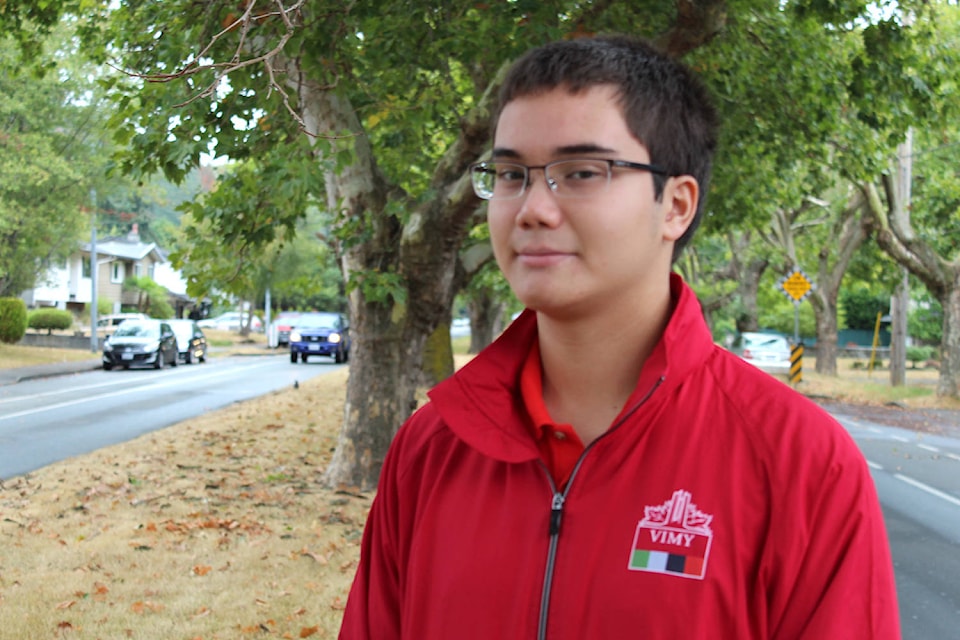For Saanich student John Evans, his recent visit to Canadian war memorials in France including Vimy Ridge was an emotional experience that opened his eyes to the sacrifices that Canadians of previous generations have made for current generations.
History books, he said, might be able to tell how many people died over the course of a battle or a war. But these figures only gain any meaning when you walk among graves in cemeteries that stretch into sight without any apparent end.
“It’s terrifying almost, and it’s absolutely heart-breaking to know that all of those people sacrificed everything they have for us to remain free and have what we do today.”
Evans, who attends Mount Douglas high school, made this experience last month through the Vimy Foundation dedicated to creating opportunities for young Canadians to learn about Canada’s legacy during the First World War.
He was among a group of 16 students — 14 of them Canadians — who spent two weeks in the United Kingdom, France and Belgium visiting key historical sites, major museums, battlefields, cemeteries and memorials including the Canadian National Vimy Memorial after winning a Beaverbrook Vimy Prize.
Evans and his fellow program participants — 13 girls and 3 boys — visited these sites as countries around the world including Canada get ready to mark the centenary of Armistice Day, Nov. 11, 1918, which marked the end of the First World War between the Allied powers led by France, the United States, and the United Kingdom and the Central powers led by Germany, Austro-Hungary, and Turkey.
The Battle of Vimy Ridge fought in April 1917 also holds special significance in Canadian history. Many historians have argued that this battle marked a turning point in Canadian history by fostering a distinct Canadian identity through shared sacrifice.
“The most important moment in the [program] for me was visiting the Vimy Ridge Memorial,” he said. “That was because I found there were so many different aspects. You are at a sight where Canadians came together in a big unifying moment. You are at a memorial which the names of some 11,000 people on it, who died and whose bodies were never found. And it was just extremely moving to stand at that memorial and to read the names that were carved into that stone. To actually go to sites and to see what the soldiers were facing with your own eyes can be extremely powerful.”
The 17-year-old Evans is still contemplating what he plans to do after high school. But the program has given him a better appreciation of Canada’s history and the importance of preserving it.
“Seen what I have seen, you realize that an entire generation sacrificed itself for the benefit and safety of those who came after them,” he said. “Then you realize that all the survivors are gone, that they are no longer here to tell their stories. You get a sense of responsibility to carry the torch. You have to make sure that they are remembered.”
